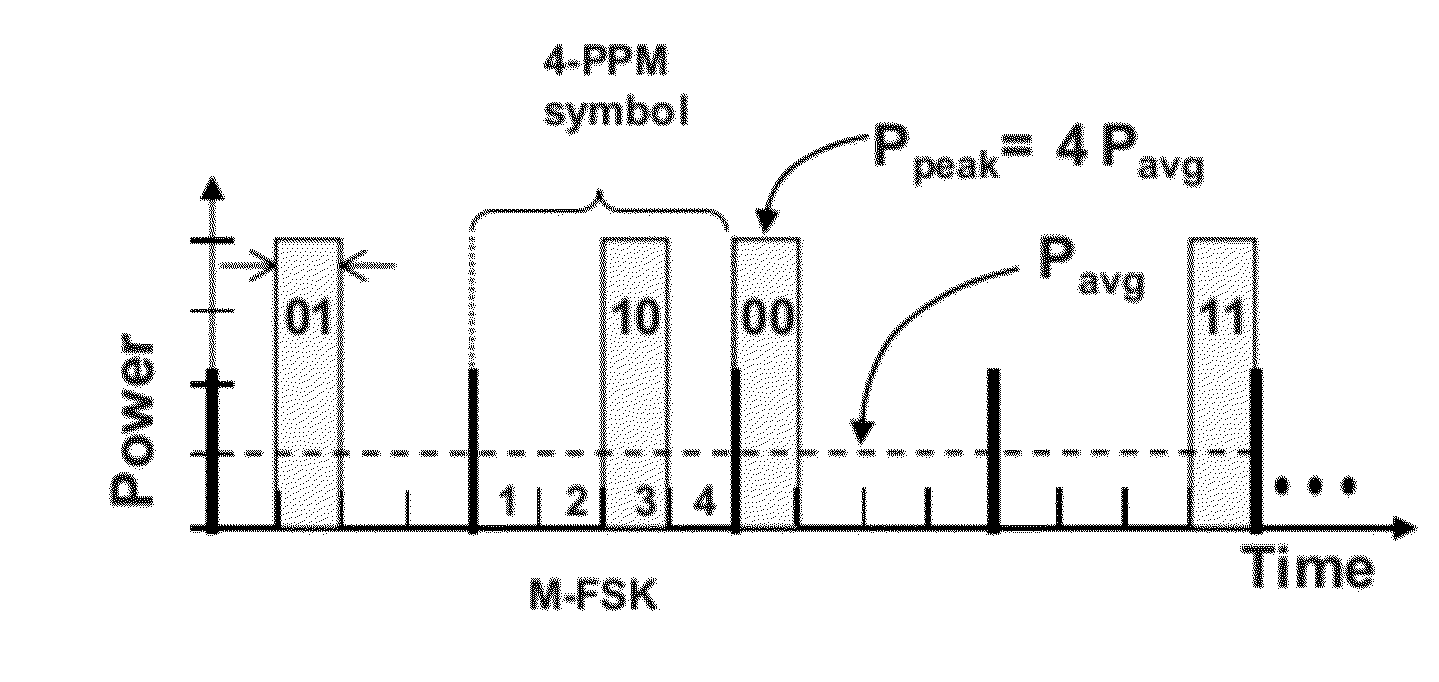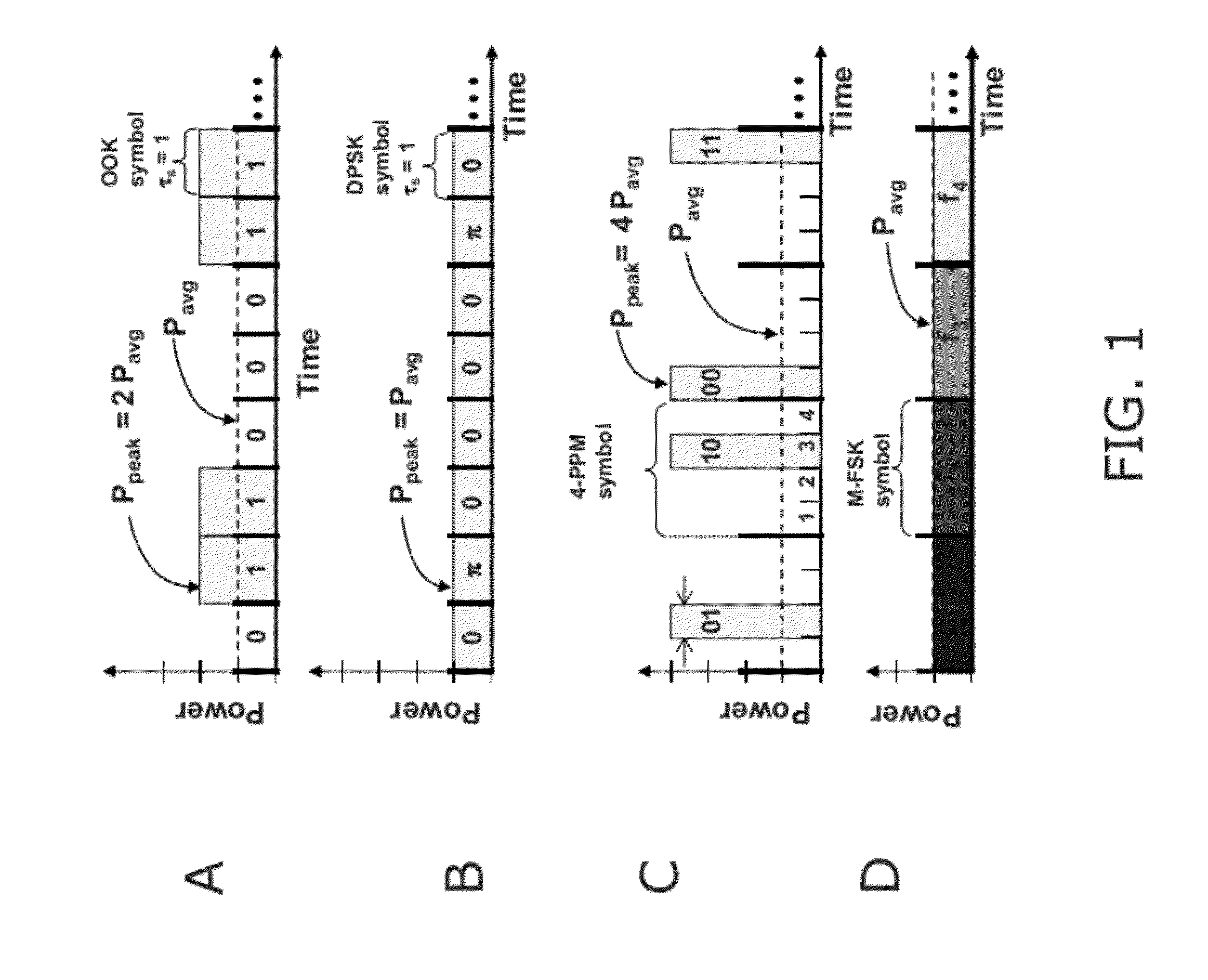Optical receiver configurable to accommodate a variety of modulation formats
a modulation format and optical receiver technology, applied in electromagnetic transmission, electrical equipment, transmission, etc., can solve the problems of high symbol bandwidth, power-hungry high-speed adcs, etc., and achieve the effects of reducing electrical bandwidth, good receiver sensitivity, and simplifying implementation
- Summary
- Abstract
- Description
- Claims
- Application Information
AI Technical Summary
Benefits of technology
Problems solved by technology
Method used
Image
Examples
Embodiment Construction
[0034]A description of example embodiments of the invention follows.
[0035]The orthogonal modulation formats are explained with reference to FIGS. 1A-1D. The term “orthogonal,” as used herein with reference to a modulation format Refers to the property that any two symbols of an orthogonal symbol set, si(t) and sj(t) have the following well known mathematical relationship
∫si(t)sj(t)dt=Esδij
where Es is the energy per symbol and δij is the Kronecher delta function:
δij={0,ifi≠j1,ifi=j.
In other words, different symbols within an orthogonal symbol set have the same energy (Es) but no joint energy, meaning filters may be employed to separate orthogonal symbols without any crosstalk.
[0036]To better understand the benefits afforded by embodiments of this invention, it is instructive to understand the properties of commonly used modulation formats.FIG. 1A is a schematic representation of the On-Off-Keying (OK) modulation format imlementented with NRZ signaling. This is one of the simplest mo...
PUM
 Login to View More
Login to View More Abstract
Description
Claims
Application Information
 Login to View More
Login to View More - R&D
- Intellectual Property
- Life Sciences
- Materials
- Tech Scout
- Unparalleled Data Quality
- Higher Quality Content
- 60% Fewer Hallucinations
Browse by: Latest US Patents, China's latest patents, Technical Efficacy Thesaurus, Application Domain, Technology Topic, Popular Technical Reports.
© 2025 PatSnap. All rights reserved.Legal|Privacy policy|Modern Slavery Act Transparency Statement|Sitemap|About US| Contact US: help@patsnap.com



